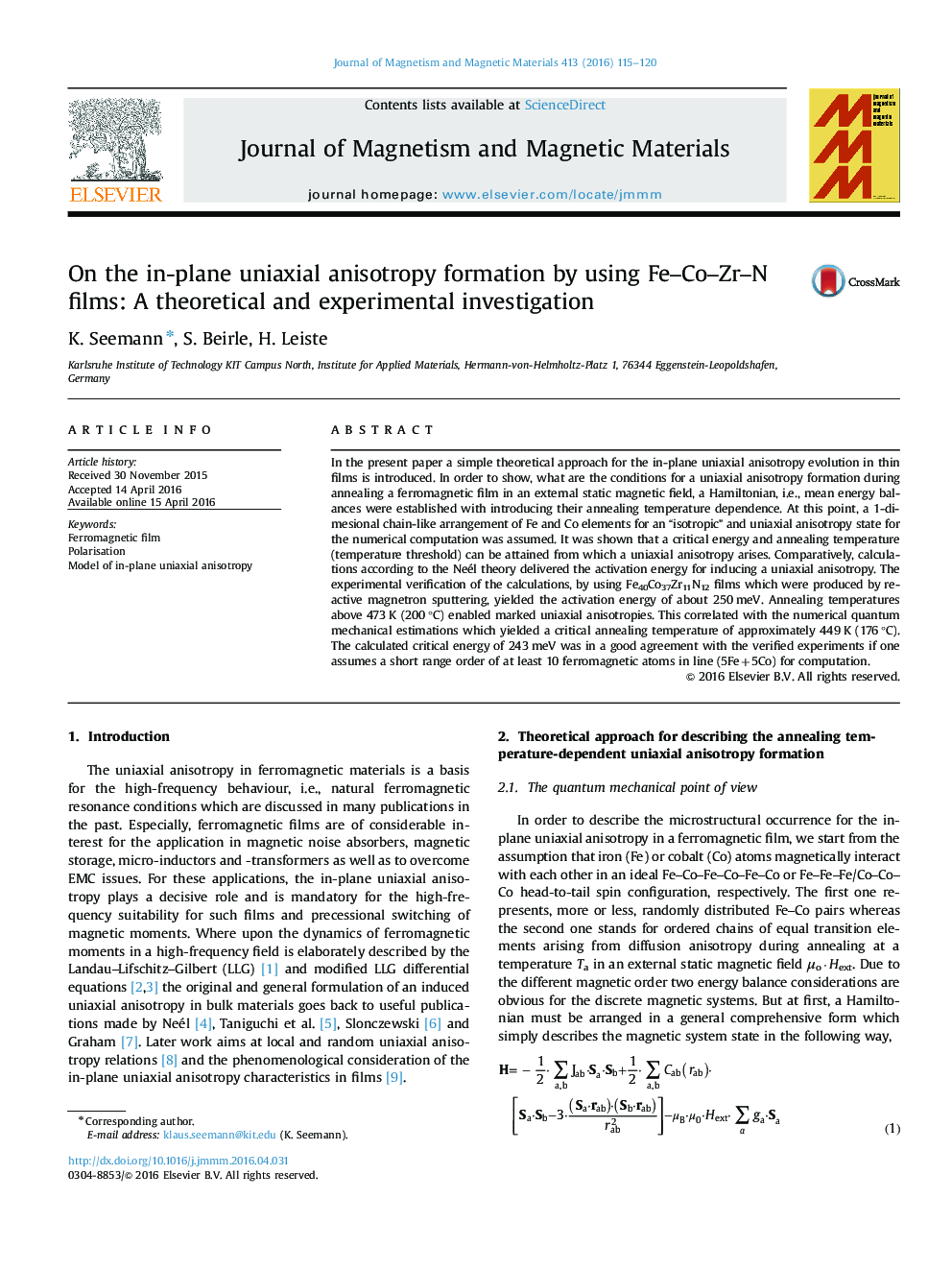| Article ID | Journal | Published Year | Pages | File Type |
|---|---|---|---|---|
| 1798100 | Journal of Magnetism and Magnetic Materials | 2016 | 6 Pages |
•Model and theoretical description of the uniaxial anisotropy in ferromagnetic films.•Critical energy and a critical temperature for inducing the uniaxial anisotropy.•Investigation of the activation energy for inducing the uniaxial anisotropy.•Comparison with the model and according to the Neél theory.
In the present paper a simple theoretical approach for the in-plane uniaxial anisotropy evolution in thin films is introduced. In order to show, what are the conditions for a uniaxial anisotropy formation during annealing a ferromagnetic film in an external static magnetic field, a Hamiltonian, i.e., mean energy balances were established with introducing their annealing temperature dependence. At this point, a 1-dimesional chain-like arrangement of Fe and Co elements for an “isotropic” and uniaxial anisotropy state for the numerical computation was assumed. It was shown that a critical energy and annealing temperature (temperature threshold) can be attained from which a uniaxial anisotropy arises. Comparatively, calculations according to the Neél theory delivered the activation energy for inducing a uniaxial anisotropy. The experimental verification of the calculations, by using Fe40Co37Zr11N12 films which were produced by reactive magnetron sputtering, yielded the activation energy of about 250 meV. Annealing temperatures above 473 K (200 °C) enabled marked uniaxial anisotropies. This correlated with the numerical quantum mechanical estimations which yielded a critical annealing temperature of approximately 449 K (176 °C). The calculated critical energy of 243 meV was in a good agreement with the verified experiments if one assumes a short range order of at least 10 ferromagnetic atoms in line (5Fe+5Co) for computation.
